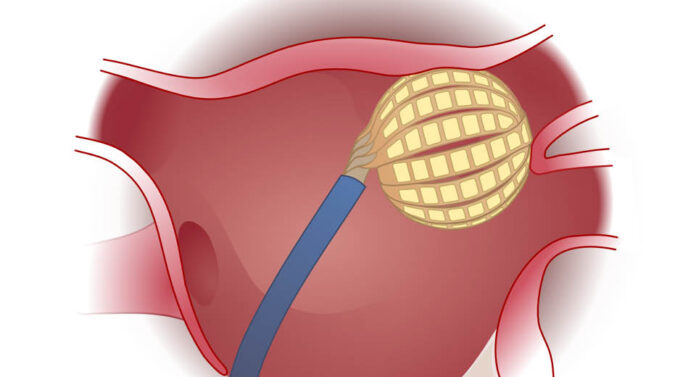Ever since my daughter was born with congenital heart disease (CHD) I have paid a great deal of attention to advances in the treatment of cardiovascular problems. And now that I have through COVID-19 been blessed with my own condition, Atrial Fibrillation (AF), my antennae have gotten a lot more attuned to ferreting out breakthroughs that represent exciting progress in managing diseases of the heart. Today, I’m writing about two of them.
Dutch Researchers Develop Biodegradable Implants
The first comes from work being done at the Eindhoven University of Technology in The Netherlands. Researchers there along with a number of clinical partners are developing biodegradable implants including heart valves, conduits, and stents. This material breakthrough could significantly advance treatment in children with heart disease.
Current prostheses are non-degradable and stay in the body permanently. In a child with CHD, it means the implant doesn’t grow with the body guaranteeing the need for heart operations and procedures down the line.
But with biodegradable implants, the body can absorb them in time and transform them in living tissue. States Carlijn Bouten, one of the developers of the technology, “For heart valves, we are targeting young children who are still growing since the current non-degradable heart valves do not work for them. Then we are designing regenerative stents for adults and elderly subjects with vascular diseases. This new stent is different from the current stents as it triggers the body to heal the damaged artery from the inside, while the stent structure itself only stays temporarily in the body. This can overcome many of the risks associated with permanent stents.”
To replace traditional stents, implants that look like the coiled spring in a ballpoint pen, the researchers have created a biodegradable electrospun polymer that can be implanted using a cardiac catheter, minimally invasive when compared to cutting open the chest. These new biodegradable stents are bioresorbable allowing the body to eventually incorporate the structure into a blood vessel, usually, a blocked or partially blocked artery.
The final invention from this innovative Dutch collaboration is the creation of soluble heart valves. Heart valves are largely made of collagen, a structural protein that creates scaffolding to allow for shaping cellular matrices, making up 24 to 30% of our entire body’s protein content.
Transplanted bovine, porcine, or homograft (cryogenically preserved human tissue) valves are used today for children with CHD. My daughter’s current pulmonary valve is a bovine (from a cow) valve inserted by catheterization to replace a previous failing homograft. Eventually, the bovine valve will also fail, and when it does she may be the recipient of what this Dutch team of researchers is producing.
How does it work? When implanted the largely cell-free biodegradable heart valve will allow her own tissue to form where the implant is located until the latter is fully absorbed. The valve is an electrospun scaffold designed to be populated with the host’s own cells and tissues. In the end she would have a fully functioning human heart valve that could serve her for the rest of her life with no need for further open-heart surgery or catheterization procedures.
Breakthrough in Treatment of Atrial Fibrillation
Burnaby, British Columbia-based Kardium, is the inventor of a new system for treating AF, a condition that affects 37 million people around the world. Its Globe (R) Mapping and Ablation System (GMAS) offers high-definition mapping, and atrial ablation through the insertion of a single catheter. The company was in the financial news this week announcing the receipt of $115 million USD from new investors.
Using a catheter, cardiologists can insert the GMAS into the heart where it opens its 16-flattened ribs into a 30-millimeter spherical array (see illustration above) studded with 122 electrodes. Using the electrodes it generates a high-definition anatomical and electrical map of an AF patient’s heart including the pulmonary veins associated with the faulty electrical signals. After mapping the system then delivers radio-frequency (RF) energy to heat and ablate the identified tissue which stops the AF. The 122 electrodes record electrograms, pace, and measure tissue contact and temperature within the left atrium with up to 24 simultaneously firing to guide the ablation which isolates the pulmonary veins.
How does GMAS compare to other current AF catheterization technologies? Most, today, require inserting two catheters, one for mapping, and the second for ablation. GMAS eliminates one which dramatically reduces patient risk from complications such as cardiac tamponade which happens when catheter guidance accidentally nicks or punctures tissues within the heart or its surroundings.
In a recent clinical study involving 60 patients in Germany, they underwent AF ablation using the GMAS. Within 12 months, more than 75% in the study were able to dispense with beta-blockers and blood thinners, the medications commonly given to those with AF. Two of the patients in the study developed a complication, cardiac tamponade, a serious complication that can happen with catheterization procedures. The Globe Mapping and Ablation System did not directly contribute to these complications caused by accidents during the threading of the catheter to position the device.
When I read about Kardium in the newspaper, I sent a note to my cardiologist along with a link to the company’s website. He wrote me back and said he was contacting the company that day. Further clinical trials are in the offing with the hope to receive US FDA, and Health Canada approval within the next 24 months. I wish it were sooner so that I could be one of the recipients of this amazing AF mapping and ablation treatment.









